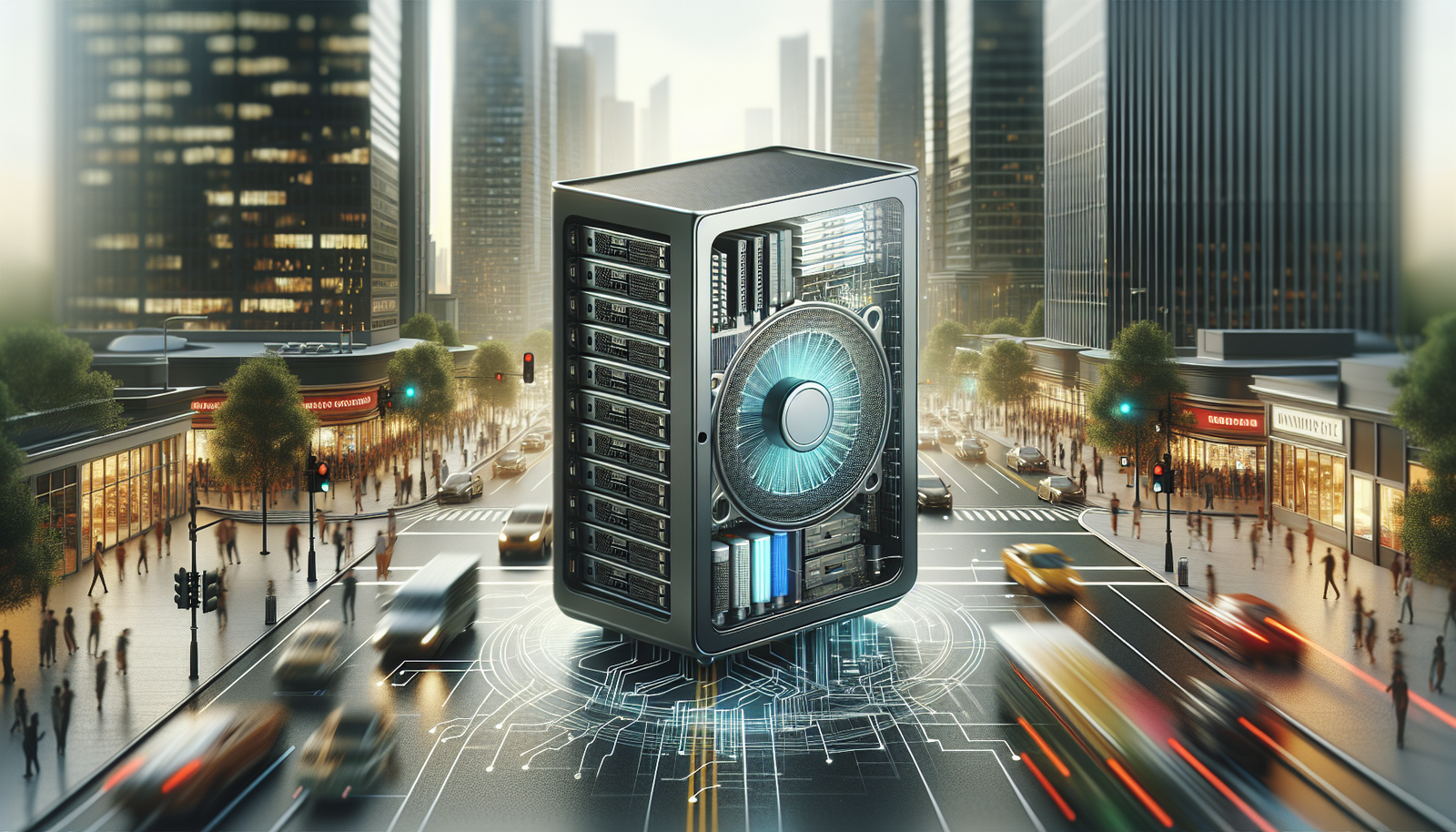Have you ever thought about the ways technology shapes our daily lives? From the devices I use to the way businesses operate, advancements like edge computing are transforming the landscape. Today, I’m excited to dive into the advantages of implementing edge computing in businesses, a trend that’s becoming increasingly significant in our digital age.
What is Edge Computing?
Edge computing refers to the processing of data near the source of data generation rather than relying on a centralized data center located far away. It brings computation and data storage closer to where it is needed, which can lead to faster responses and reduced latency. Think of it as moving the processing power closer to the user, making everything run smoother and quicker.
By harnessing edge cases, businesses can manage real-time data and improve their overall efficiency. With so much data swirling around today, the ability to analyze that information promptly can set a company apart from its competitors.
Why Edge Computing Matters
Understanding the importance of edge computing goes beyond simply knowing its definition. It’s about recognizing how it affects my everyday interactions with technology. Whether I’m streaming a movie or using smart devices at home, edge computing plays a pivotal role in enhancing my experiences.
In a business context, it can be seen as a way to optimize resources, reduce costs, and ultimately improve service delivery. Organizations that leverage edge computing are making a strategic move that can yield significant benefits.
Advantages of Edge Computing for Businesses
1. Improved Speed and Reduced Latency
One of the most immediate benefits I notice with edge computing is the increase in speed and decrease in latency. When data is processed more closely to where it’s generated, I experience faster response times. This is particularly important for businesses that depend on real-time data analysis—like those in finance or healthcare.
For example, when a retail company uses edge computing for inventory management, they can receive instant updates on stock levels and sales. This immediacy helps them make informed decisions quickly, leading to improved customer experiences.
2. Enhanced Data Processing
By utilizing edge computing, I see businesses can process more data at the source. Instead of sending tons of data to a central cloud server for processing, edge devices can analyze it locally, leading to more efficient data handling.
This capability allows businesses to filter out unnecessary data and send only significant insights to the cloud. It reduces bandwidth costs and enhances overall efficiency. For instance, a smart sensor in a manufacturing plant could detect equipment performance metrics and analyze that data on-site rather than relaying everything back to the main server.
3. Cost Efficiency
When I think of cost savings, I can’t help but appreciate how edge computing can reduce expenses. By processing data at the edge, businesses can minimize their reliance on expensive data transfers. The lower bandwidth requirements mean that companies can save on cloud service fees and improve their return on investment.
Additionally, with fewer infrastructural needs, businesses can limit their physical hardware investments, which contributes to overall cost efficiency. Over time, the savings can accumulate significantly.
4. Better Security Practices
In today’s digital age, data security is paramount. With edge computing, I see a potential increase in security measures. Since data is processed closer to its source, there are fewer opportunities for it to be intercepted during transmission.
Moreover, by implementing localized data processing and storage, businesses can limit exposure to potential cyber threats. If data is compromised at an edge location, the potential damage is often more contained compared to breaches in a central data center.
5. Increased Reliability and Stability
In many situations, I find that edge computing enhances system reliability. When operations can continue at the edge even if the central server is down, it leads to increased uptime for businesses. This reliability is especially vital for industries like healthcare, where interruptions can have serious consequences.
By having systems that can operate independently in real-time, businesses can ensure their processes remain intact during unforeseen circumstances.
6. Greater Scalability
Another notable aspect of edge computing is its scalability. I’ve observed that businesses adopting this technology can grow their operations more seamlessly. By adding more edge devices rather than overhauling a central system, they can scale according to their needs without extensive downtime or large investments.
This flexibility allows businesses to adapt quickly to market demands, all while maintaining operational efficiency.
7. Support for IoT Implements
As the Internet of Things (IoT) continues to expand, edge computing becomes an indispensable element in its ecosystem. I’ve seen how IoT devices generate a staggering amount of data. Edge computing allows that data to be processed closer to the point of generation, resulting in quicker analytics and response times.
For instance, in smart cities, traffic lights equipped with edge computing can analyze traffic patterns and adjust in real-time to improve flow and reduce congestion.
8. Facilitation of Artificial Intelligence and Machine Learning
With edge computing, I find that businesses can implement artificial intelligence (AI) and machine learning (ML) algorithms more efficiently. Instead of sending vast amounts of data to a central server for analysis, these technologies can analyze data locally at the edge.
This local intelligence allows for faster, more efficient learning models. For example, a manufacturing facility can leverage AI for predictive maintenance, forecasting equipment issues before they lead to downtime—all thanks to the instantaneous analysis provided by edge computing.
Real-World Applications of Edge Computing
1. Retail Industry
In retail, I see edge computing being used to enhance customer experiences. From smart shelves that track inventory in real-time to personalized marketing strategies based on customer behavior analysis, edge computing allows retailers to make data-driven decisions on the spot.
For example, a grocery store can analyze customer traffic and adjust staffing levels or product placements instantly.
2. Healthcare
In healthcare, the application of edge computing can revolutionize patient care. I find it amazing how real-time monitoring devices can transmit critical patient data instantly to healthcare professionals. This immediate access allows for quicker decision-making, potentially saving lives.
Hospitals can deploy edge computing to manage patient data more efficiently, ensuring that physicians have the most accurate and up-to-date information right when they need it.
3. Manufacturing
For the manufacturing sector, edge computing can optimize production processes. I’ve witnessed how factories can utilize smart sensors to monitor equipment health and performance in real-time, allowing them to predict failures and carry out maintenance before equipment fails.
This capability not only reduces downtime but also extends the lifespan of machinery, which is vital for operational efficiency.
4. Transportation and Logistics
I find it fascinating how businesses in transportation and logistics can leverage edge computing for better route optimization. By processing data from GPS and traffic systems at the edge, companies can reroute delivery trucks in real-time, minimizing delays and cutting costs.
Moreover, edge computing can enhance supply chain visibility by tracking shipments and inventory levels throughout the journey.
Conclusion
In summary, the integration of edge computing into business operations can lead to numerous advantages that enhance speed, efficiency, security, and scalability. As I learn more about this technology, I can’t help but feel optimistic about its potential to drive innovation in various sectors.
With real-world applications as diverse as retail, healthcare, manufacturing, and transportation, edge computing is not just a trendy buzzword; it’s a fundamental shift in how businesses can operate more effectively in our rapidly evolving digital landscape.
As organizations increasingly adopt this technology, the benefits will only continue to grow. For anyone involved in business strategy, the time to consider edge computing is now. It might just be the catalyst for remarkable growth and innovation in the years to come.






